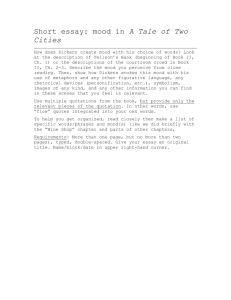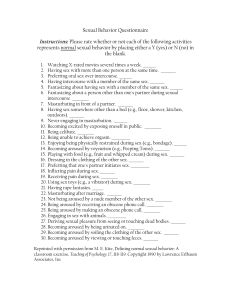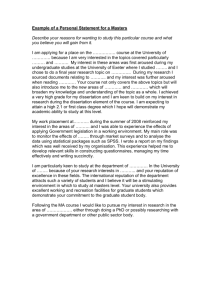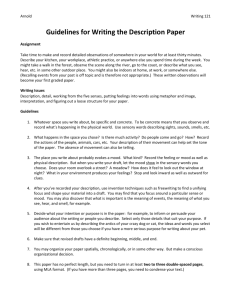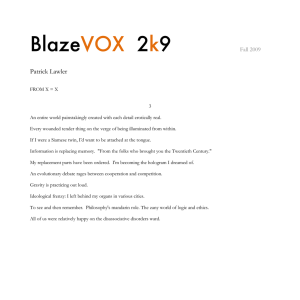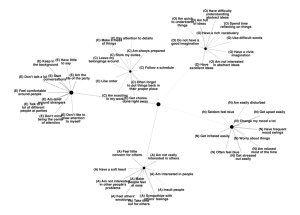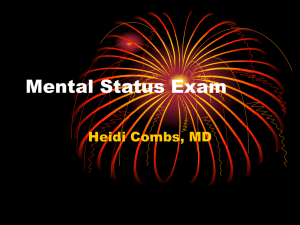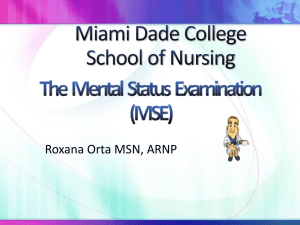Guidelines for a Mental State Examination (MSE)
advertisement
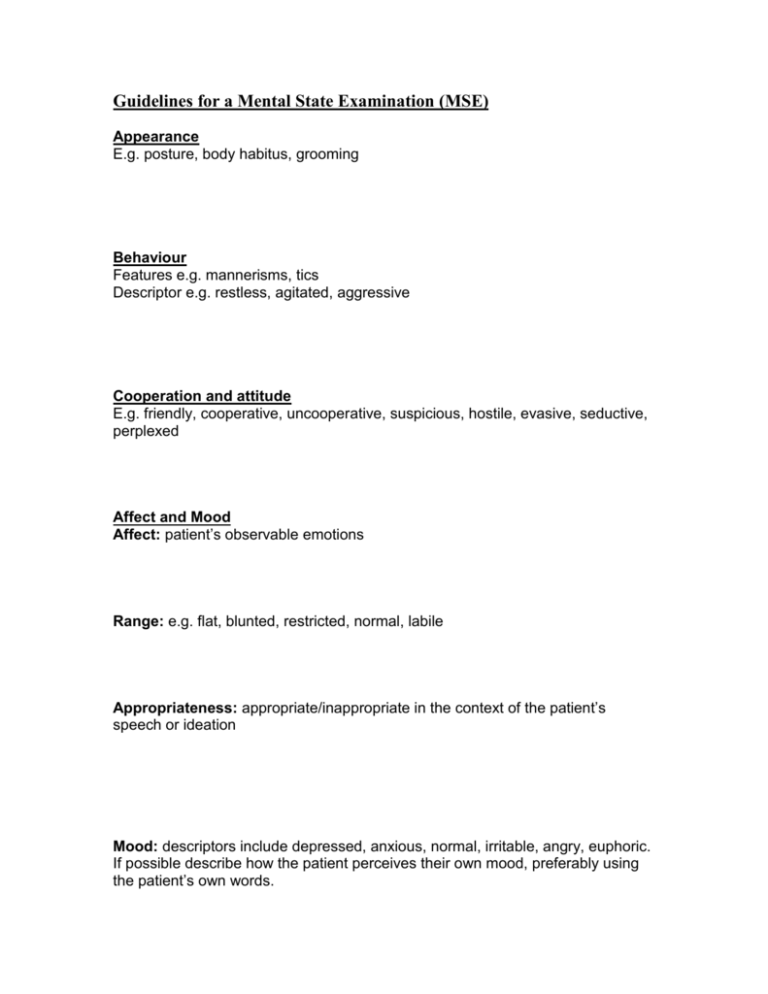
Guidelines for a Mental State Examination (MSE) Appearance E.g. posture, body habitus, grooming Behaviour Features e.g. mannerisms, tics Descriptor e.g. restless, agitated, aggressive Cooperation and attitude E.g. friendly, cooperative, uncooperative, suspicious, hostile, evasive, seductive, perplexed Affect and Mood Affect: patient’s observable emotions Range: e.g. flat, blunted, restricted, normal, labile Appropriateness: appropriate/inappropriate in the context of the patient’s speech or ideation Mood: descriptors include depressed, anxious, normal, irritable, angry, euphoric. If possible describe how the patient perceives their own mood, preferably using the patient’s own words. Speech Rate: slow, normal, rapid or pressured Volume: soft, normal, loud or shouting Quantity: nil spontaneous, normal, talkative Quality: accent, rhythm, impediments Thought form and content (judged from listening to the patient’s speech) Thought form: e.g. thought-blocking, racing thoughts, logical connection, flight of ideas, loosening of association Thought content: any pathological features such as: preoccupations, overvalued ideas, delusions, ideas of reference, obsessions, compulsions. (What is the subject matter of the patient’s thoughts or preoccupation? Any suicidal or homicidal ideas?) Perception Any unusual sensory phenomena such as: hallucinations (especially auditory), illusions, heightened perception, derealisation/depersonalization Cognition Level of consciousness: alert, drowsy (easily aroused), stupor (aroused only by vigorous stimuli), coma (unable to be aroused) Memory: immediate, short-term (recent) and long-term (remote) Orientation: time, place and person Concentration: abstract thinking capacity Insight An individual’s awareness of their illness and its effects and implications: e.g. Good, partial or poor Judgement Ability to accurately assess a situation and act appropriately in response: e.g. intact or impaired Summary



